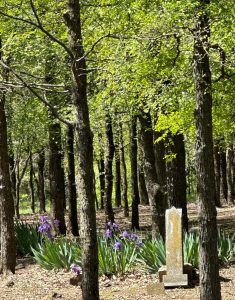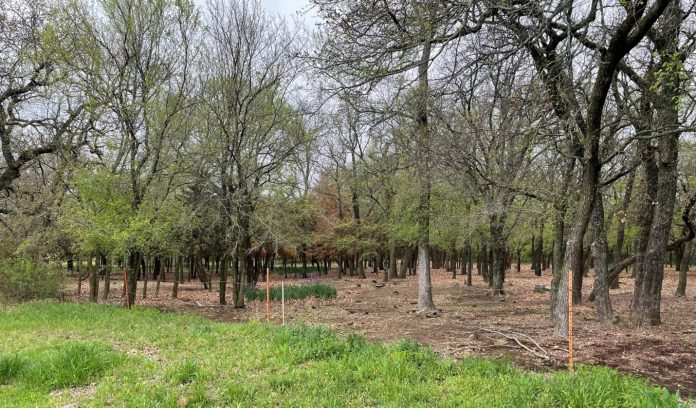On Tuesday, Precinct 1 Commissioner Ryan Williams offered solutions to ongoing concerns about the historic St. John Cemetery off Hub Clark Road.
“I believe it’s our duty to go ahead and help with this situation,” said Precinct 1 Commissioner Ryan Williams.
Several residents, including Willie Hudspeth of Denton, have approached Commissioners Court about a lack of access to the property and a lack of attention to upkeep of the historic Black cemetery.
As part of an item placed on the Commissioners Court agenda, Commissioner Williams explained the Court approved maintenance of the St. John’s Cemetery on June 14, 2016, allowing the Denton County Historical Commission and the Office of History & Culture to organize volunteers and serve as a liaison between property owners surrounding the cemetery. The first clean-up was on July 15, 2016.

From July 2016 through March of this year, Denton County has spent an estimated $107,925 to pay for outside labor to clear and maintain the cemetery. The maintenance schedule is one Saturday per month in February through December and twice per month from June through August. In addition, county staff keep dead trees cleared and tree limbs trimmed, having hauled an estimated 36 yards of cut limbs and dead trees from the property. County employee time – estimated at 52 hours since January 2023 alone – is not part of the estimated amount spent to date.
On Jan. 9, 2024, the Texas Historical Commission approved the designation of St. John Cemetery as an Historic Texas Cemetery.
Leaves from the significant tree canopy are left on the property to prevent erosion as well as help feed the trees and allow water to be absorbed and filtered through layers of soil to feed the tree roots. Slow biodegradation is a common practice to maintain a healthy ecosystem. Removing leaves could lead to erosion and eventual damage to the tree canopy.
Property owners told Commissioner Williams when he visited the property recently that they would prefer the county to continue to be a liaison and would allow regular access to the property if sufficient notice was given.
Under the Texas Health and Safety Code, Section 711.041, ingress and egress to a cemetery surrounded by private property is determined by the property owners. The right of access, including the hours, and where access can occur is determined by the landowner, who can ask for a 14-day written notice prior to anyone accessing their property to visit the cemetery.
Commissioner Williams also announced plans to install an entry to the cemetery in several months. The iron gate entry would be supported by stone columns on which the historical marker could be placed as well as information about the history of St. John Cemetery.
“This is on my to-do list and to do something to make the entrance to the cemetery a little more appealing,” Commissioner Williams said.
County records show the cemetery was sold to the St. John Church in 1891 and has not changed ownership since that time.
Historic records show the cemetery has a history dating back to the late1800s where it served as a final resting place for the African American community until the late 1930s. The cemetery grounds were officially acquired by founders of a church in 1891 though the earliest burial was recorded in 1882. The community established the St. John Church, a Baptist parish for the freedom enclave, as well as a school and the St. John Cemetery. Over the years, the church vanished, and the cemetery faded into obscurity.
“We are dealing with the situation where we are trying to be respectful of the individuals buried there,” Commissioner Williams said.



















